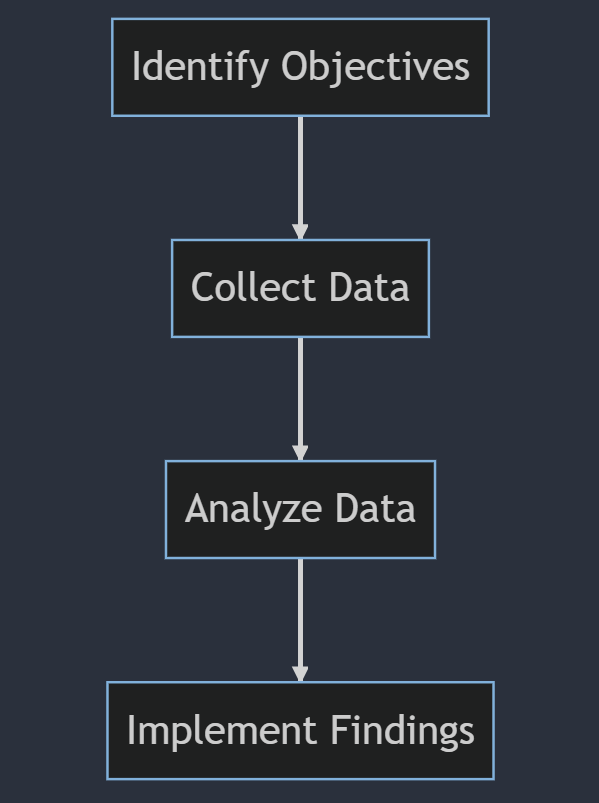How to Effectively Use Data Analysis to Interpret User and Customer Behavior?
Understanding the Basics
Before diving into the deep end, let's get our toes wet by understanding some key concepts.
What is Consumer Behavior?
Simply put, consumer behavior is the study of how individuals, groups, and organizations select, use, and dispose of goods, services, ideas, or experiences. It's the heartbeat of marketing, providing invaluable insights into why people make the purchases they do.
Types Of Consumer Behavior
Consumer behavior isn't a one-size-fits-all concept. In fact, there are four primary types:
Complex buying behavior: This happens when consumers are highly involved in a purchase and perceive significant differences among brands.
Dissonance-reducing buying behavior: Here, consumers are highly involved but see little difference among brands.
Habitual buying behavior: This occurs when consumers aren't particularly involved and see little difference among brands.
Variety-seeking buying behavior: This happens when consumers are less involved in the purchase but perceive significant differences among brands.
Factors That Affect Consumer Behavior
Many factors can influence consumer behavior, from personal beliefs to social norms. Some of the major ones include cultural, social, personal, and psychological factors. These could be anything from a person's age and lifestyle, to their social class and group influences.
What Do You Mean by ‘Analytics’?
When we talk about 'analytics', we're referring to the discovery, interpretation, and communication of meaningful patterns in data. It's all about drawing actionable insights from raw data to make better decisions.
There are three types of analytics:
Descriptive analytics: This looks at past data to understand what has happened.
Predictive analytics: This uses past data to forecast what might happen in the future.
Prescriptive analytics: This goes a step further to suggest various courses of action to shape what should happen in the future.
The Intersection of Consumer Behavior and Analytics
Alright, now that we've got our basics down, let's dive into the intersection where consumer behavior meets analytics. This is where things get really interesting!
What Is A Consumer Behavior Analysis?
Consumer behavior analysis is essentially the use of analytics to understand the whys and hows of consumer decisions. It digs deep into consumers' buying patterns, preferences, and motivations. The goal? To make more informed business and marketing decisions, drive engagement, and boost sales.
How to Conduct a Consumer Behavior Analysis
Conducting a consumer behavior analysis isn't as daunting as it sounds. Here are a few steps to get you started:
Identify the objectives: What do you want to learn about your consumers? It could be their buying habits, preferences, or factors influencing their decisions.
Collect data: Use surveys, interviews, or leverage data from your CRM or social media platforms.
Analyze the data: This is where analytics come in. Look for patterns, trends, and insights that can inform your strategies.
Implement findings: Put what you've learned into action. Adapt your marketing strategies based on your analysis.
3 Consumer Behavior Analytics Platforms
Looking for tools to help with your analysis? Here are three platforms that are particularly handy:
Google Analytics: This is a goldmine for understanding how consumers interact with your website.
Adobe Analytics: This offers real-time analytics and detailed segmentation across all of your marketing channels.
IBM Watson: This platform uses AI to predict customer behavior and deliver personalized experiences.
Customer Behavior And Analytics
The relationship between customer behavior and analytics is symbiotic. While customer behavior provides the raw data, analytics is the lens that brings it into focus, revealing actionable insights and guiding strategy.
Understanding Consumer Behavior through Analytics
By leveraging analytics, businesses can better understand consumer behavior. They can see what products are most popular, which marketing campaigns are working, how consumers navigate their websites, and much more. This enables businesses to offer more of what consumers want, improving customer satisfaction and boosting sales.
Delving Deeper into Consumer Behavior
Now that we've got a handle on the basics, let's dive a bit deeper into the fascinating world of consumer behavior. We'll examine how it influences customer service, how it can be segmented, and how rational choice theory plays into the mix.
Consumer Behaviors That Impact Customer Service
Believe it or not, consumer behavior significantly influences customer service. For instance, consumers with complex buying behaviors may require more information and guidance, translating to a higher level of customer service. On the other hand, habitual buyers might need little to no assistance. Understanding these behaviors can help businesses tailor their customer service approach, improving customer satisfaction and loyalty.
Consumer Behavioral Segmentation
Consumer behavior isn't one-size-fits-all, and that's where behavioral segmentation comes in. It divides consumers into groups based on their knowledge, attitudes, uses, or responses to a product. The most common types of behavioral segmentation include purchase behavior, benefits sought, usage rate, and brand loyalty. Knowing these segments allows businesses to target their marketing more effectively, leading to increased conversions and sales.
Rational Choice And Consumer Behavior
The rational choice theory asserts that consumers make decisions based on rational judgment. They weigh the benefits and drawbacks of different options and choose the one that provides the maximum benefit. But remember, 'rational' can be subjective - what seems rational to one consumer may not to another. So, it's essential for businesses to understand their consumers' perspectives and values when applying rational choice theory.
Importance of Analyzing Consumer Behavior
So, why should we even bother analyzing consumer behavior? The answer is pretty straightforward: It's vital to the success of your business. Let's look at some of the key reasons for it.
Reasons to Analyze Consumer Behavior
Understanding consumer behavior is a bit like having a crystal ball. It can offer invaluable insights into the minds of your customers, helping to guide your strategies and decisions. Let's dive into the specifics.
Gain Insight
First off, analyzing consumer behavior gives you valuable insights into how customers think, what they want, and why they behave the way they do. This can inform everything from product development to marketing strategies, helping you better cater to your customers' needs and wants.
Attract and Engage Potential Customers
By understanding consumer behavior, you can identify what draws customers to your product and what makes them tick. This can help you craft more compelling marketing campaigns, attract more potential customers, and keep them engaged.
Improve Customer Retention
Customer retention is all about keeping your existing customers happy - and understanding consumer behavior is key to that. By knowing what your customers like and dislike, you can tailor your offerings and customer service to their preferences, making them more likely to stick around.
In a nutshell, understanding consumer behavior is like having a superpower. It equips you with the knowledge you need to attract, engage, and retain customers, ultimately driving your business success.
Applications of Analytics in Understanding Consumer Behavior
Alright, we've reached the grand finale, where we put all this theory into practice. It's time to explore how analytics can be applied to better understand and leverage consumer behavior.
Applying Predictive Analytics to Marketing
Predictive analytics is a real game-changer when it comes to marketing. By using past consumer behavior to predict future actions, you can stay one step ahead of the game. Let's delve into some key applications.
Segmentation
Segmentation is about dividing your customer base into groups with similar behaviors, preferences, or characteristics. Predictive analytics can help identify these segments, allowing you to target your marketing efforts more effectively.
Forecasting
Forecasting involves predicting future trends based on past data. This could be anything from sales trends to customer behavior patterns. Armed with these insights, you can better plan your strategies and stay ahead of the curve.
Demand Pricing
Predictive analytics can also inform demand pricing strategies. By analyzing consumer behavior and market trends, you can predict demand for a product and adjust prices accordingly to maximize revenue.
Improve Customer Satisfaction
Predictive analytics can also help improve customer satisfaction. By anticipating customer needs and preferences, you can deliver personalized experiences that exceed expectations and boost customer loyalty.
How To Analyze Customer Behavior
Analyzing customer behavior involves a few key steps:
Data collection: Start by gathering data on customer interactions, purchases, preferences, etc.
Data analysis: Next, use analytics to identify patterns and trends in the data.
Insight generation: Translate your analysis into actionable insights. What does the data tell you about your customer's behavior and preferences?
Strategy implementation: Finally, use your insights to inform your strategies. This could be anything from product development to marketing campaigns.
And there you have it! By applying analytics, you can gain a deeper understanding of consumer behavior, leading to more effective strategies and better business outcomes. Now, go forth and conquer the world of consumer behavior analytics!




